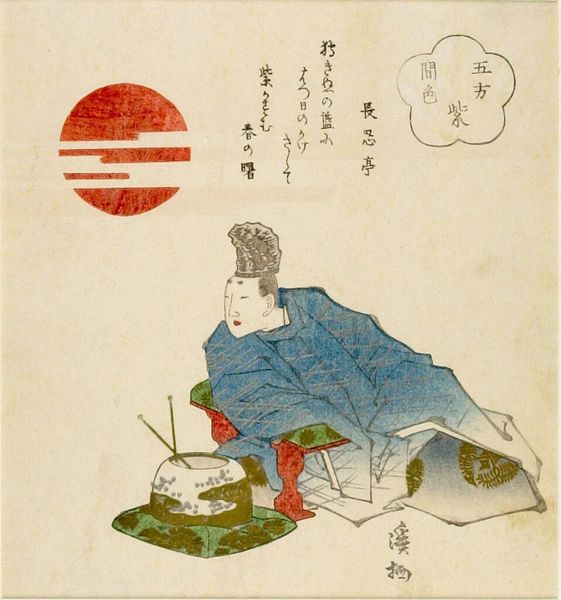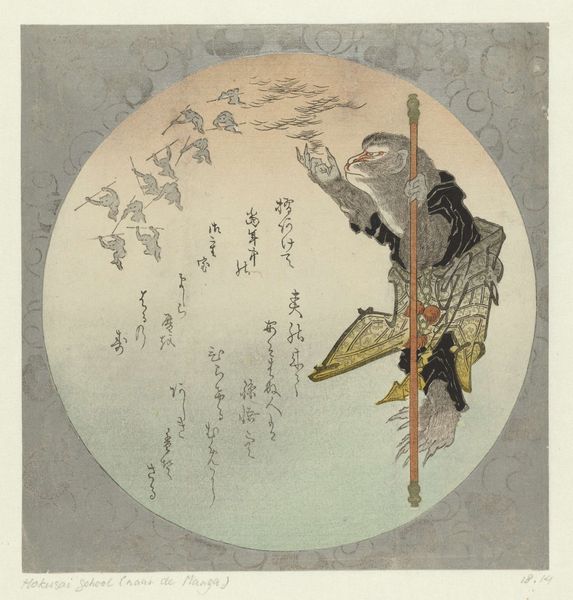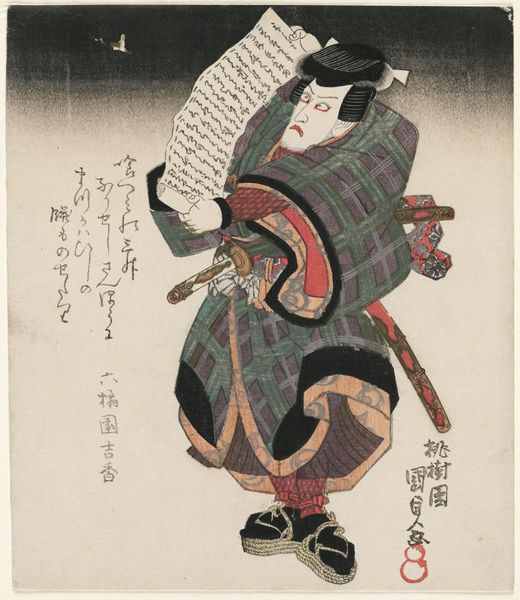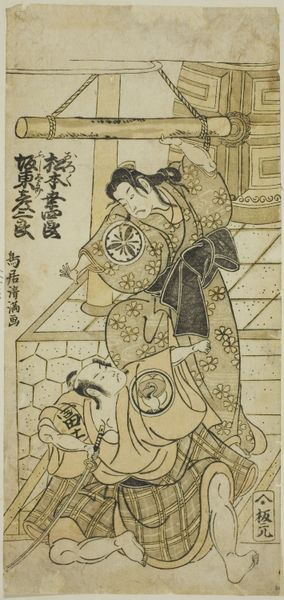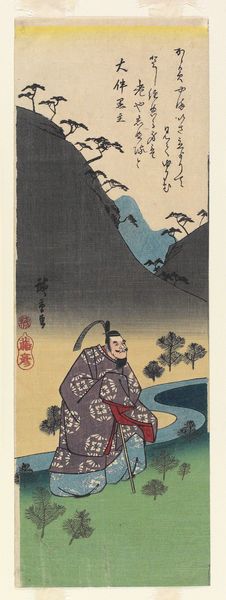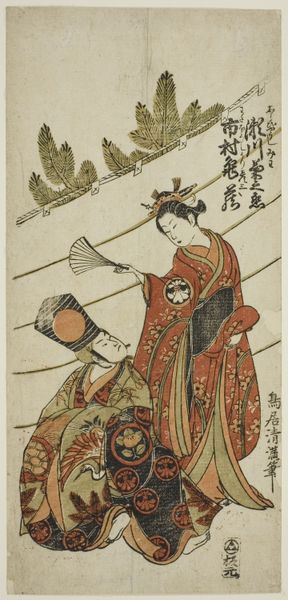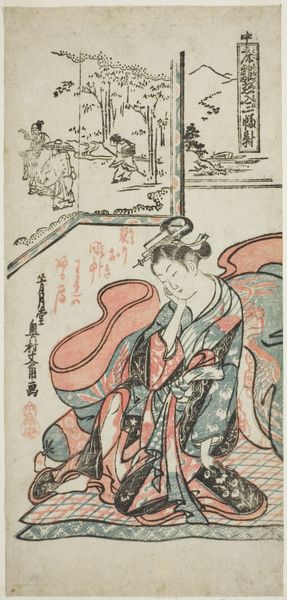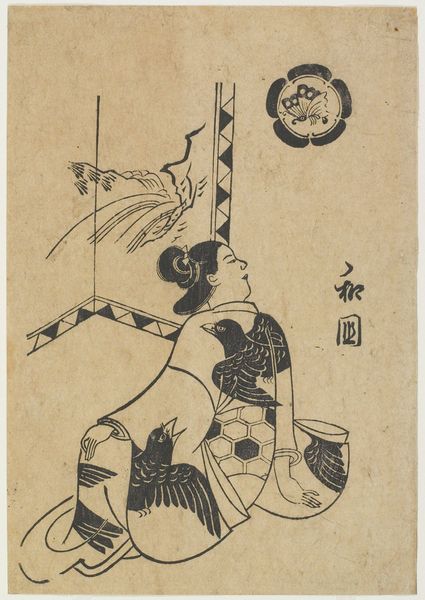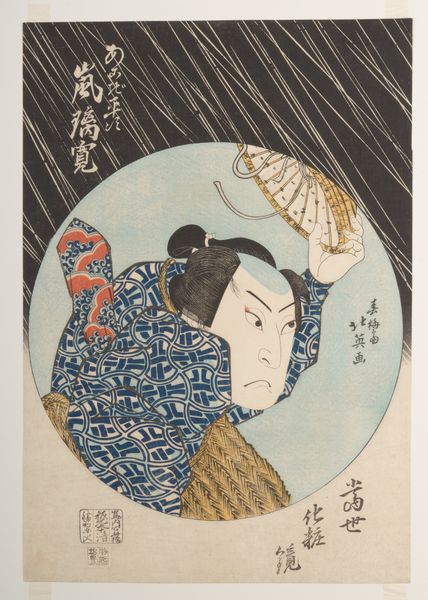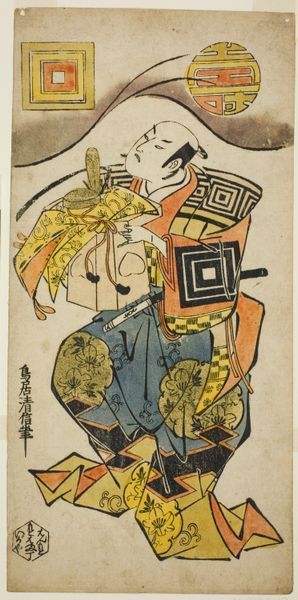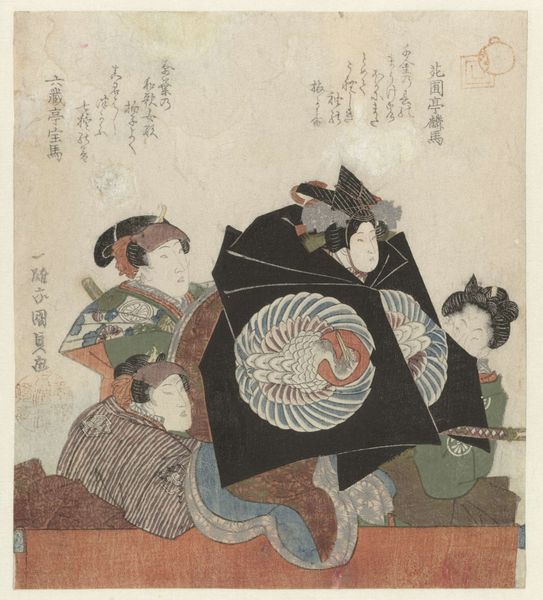
print, ink, woodblock-print
#
portrait
#
water colours
#
ink painting
# print
#
asian-art
#
ukiyo-e
#
figuration
#
ink
#
woodblock-print
#
watercolor
Dimensions: 7 3/8 × 6 3/4 in. (18.8 × 17.1 cm) (image, sheet, shikishiban)
Copyright: Public Domain
Curator: Here we have Utagawa Kunisada’s woodblock print, "Hotei God," created around 1833. The print is currently part of the collection at the Minneapolis Institute of Art. What's your initial take on this depiction? Editor: He has a rather comforting presence! The almost circular composition, the gentle color palette… he just radiates a sense of serenity, like a soft pillow on a gloomy day. Curator: Indeed. Hotei is often depicted as jolly and content, reflecting his association with happiness and abundance in Buddhist and Shinto traditions. Considering this, does the imagery align with those established cultural views? Editor: Absolutely. His oversized belly is a signifier of wealth and good fortune, yet it is never flaunted. His humble clothing and posture point toward his accessibility, indicating to the viewer that happiness isn't solely attained through material means. Also, I believe the fan and stick play into a social critique, possibly pointing out corruption during that era. Curator: That’s astute. In ukiyo-e prints, details were often carefully selected to allude to specific social conditions. In terms of print production, these images would have been distributed quite widely across various social classes. Editor: Distribution is key to this piece. Artworks like "Hotei God" allowed spiritual icons to circulate beyond temples, intertwining with ordinary people’s daily lives and secular views. It certainly suggests accessibility and a desire to inspire even in trying social and political landscapes. The red stamp is fascinating in its own right; how many sets of eyes have analyzed that over time? Curator: Its layered impression adds a kind of tangible historicity. Each color in this piece also has symbolic meaning tied to class status and political alignment during the Edo period. Looking closely, one sees Kunisada also brings a nuanced, gentle realism into his caricature that makes the image appealing to both devout and secular populations. Editor: You know, it truly stands as a mirror reflecting shifting social consciousness through spiritual symbols. I am even more captivated after our talk! Curator: It has certainly highlighted the way Kunisada utilized ukiyo-e traditions to spark cultural observations and interpretations of its own, still echoing across the ages to us today.
Comments
No comments
Be the first to comment and join the conversation on the ultimate creative platform.
